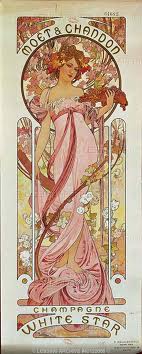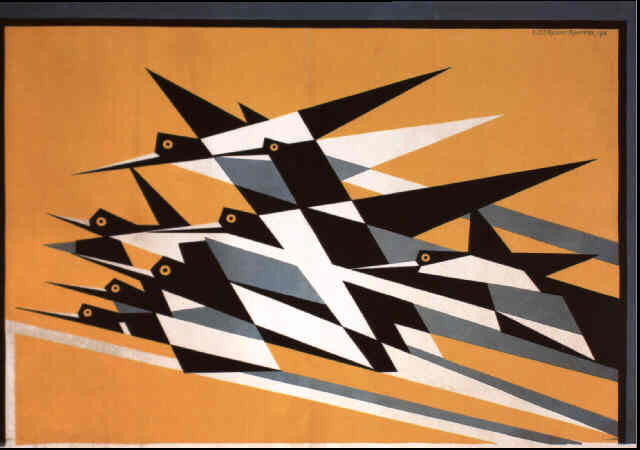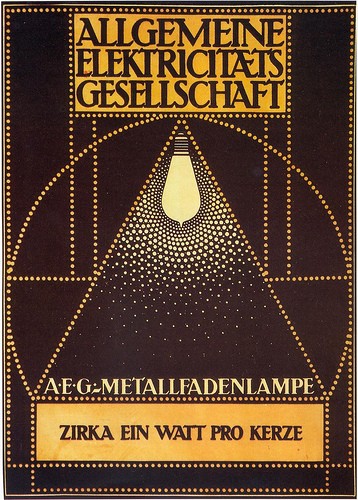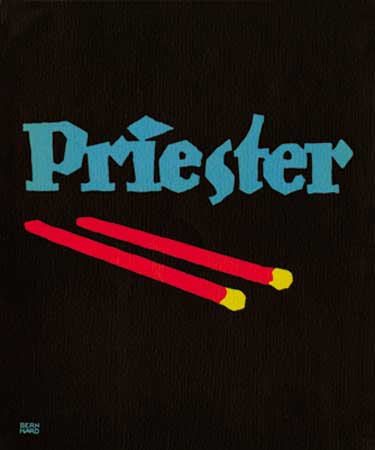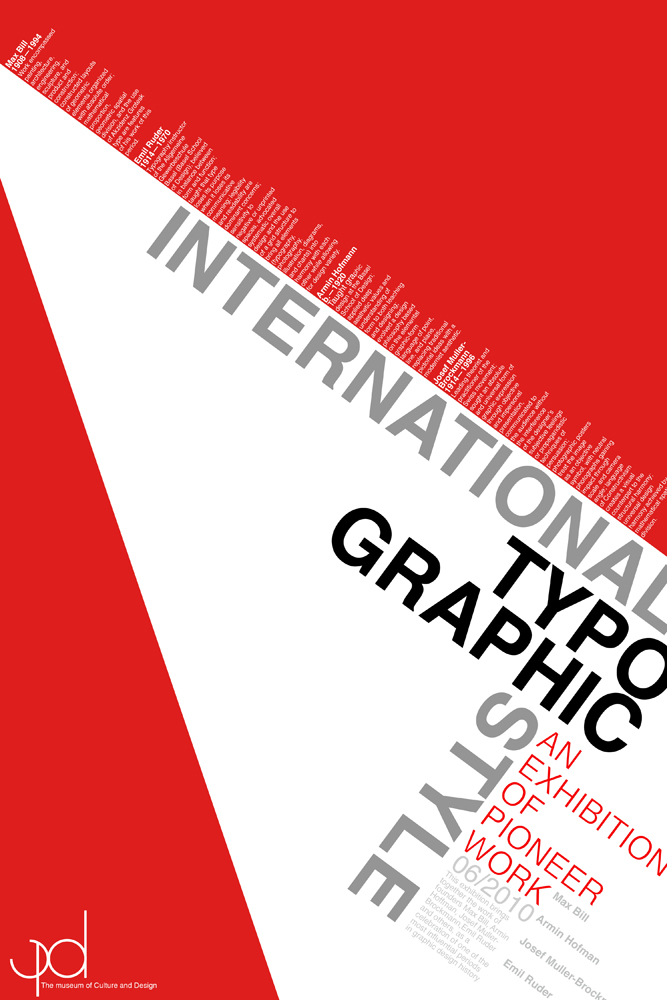During the industrial Revolution there was a growth in advertising. They were able to print faster and more because of the better press-machines. At the turn of the century, art nouveau was the most important European art-movement. The movement used elegant undulating lines and flat planes filled with detail, and was often accompanied with a symbolism. It was used in architecture, fabric design, and the industrial arts, but it was especially a big role in graphic design.
Art nouveau inspired many artists to break with academic art and unite into autonomous groups.Peter Behrens and Henri van de Velde, both with art nouveau backgrounds. They were both inspired by the arts and crafts movement, Behrens and Van de Velde pointed on the involvement of artists in industry. Behrens designed for the EAG (general electric company) their architecture, advertising, products, logo, and printed work. Van der Velde was a leading figure among the artists who aimed to bring art to industry, but he was not alone in wanting reform. In 1907 there were a group of German industrialists, architects and designers who formed the Deutcher Werkbund.
It was an association aimed to bring art and industry together. Van der velde had been one of the founding members. Called to germany, at the turn of the century, as the Grand Duchy of saxony-Weimar’s artistic adviser for industry. His job was to ‘raise the level of arts and crafts production. The Werkbund was the main forum for discussion and the means of publicizing avant garde ideas.
A drawing of Lucian Bernhard’s in 1906 produced a radical change in advertising posters. It was the result of a design contest. On the poster you see two matchsticks and the word Priester on a plain background. This started the ”plakatstil” (poster style) emphasizing clarity and simplicity. Many designers who worked in this mode followed, included hans Rudi Erth, Julius Klinger, Ludwich Hohlwein and Edward McKnight kauffer. Emil Cardinaux designed the first Swiss poster similar to the German plakatstil, and, inspired by Cardinaux, you could say there was a clear trend in the Swiss posters by 1910. With realistic images and simple typography this became known as Basel realism. Leading designers were Niklaus Stoecklin and Otto Baumberger, whose posters were characterized by a hyper realistic approach.
A very known art movement from the Netherlands was De Stijl, one of the many movements who gave their responses to the tragedy of WO1. It was established in 1917 by theo van Doesburg and others including the architect JJP Oud and the painters Vilmos Huszar and Piet Mondriaan Jan Wils, Gerrit Rietveld, Bart van der Leck Domela Nieuwenhuis and hans Richter joined them soon. The members of De Stijl sought a radical reform of the art. This reform consisted of the use of minimal colors (primary colors combined with black, white and gray) and a design as simple as possible. Altough the magazine of De Stijl sold never more than 300 copies, it had a huge influence on art in the Netherlands and abroad.
One of these movements who were influenced by De Style was Bauhaus. Bauhaus was a very famous school in Weimar and Dessau it existed only for 14 years, but it became a household name. The origins of the Bauhaus movement of modern art and architecture date back to the controversial new school of arts and crafts, which was established in Weimar in 1902 by the Belgian artist Henry van de Velde. Walter Gropius founded the Bauhaus in 1919 in Weimar, where the new German constitution was drawn up after the First World War. The artists and architects who taught at the Bauhaus were Lyonel Feininger, Paul Klee, Oskar Schlemmer, Walter Gropius, Marcel Breuer and Ludwig Mies van der Rohe. They spread their ideas after the Bauhaus closed, because Adolf Hitler seized power (1933). Soon after Bauhaus was formed it became a synonym for the radical modernization of life.
During the 1930 the Nazi’s became in power in Europe, Modernist experiments were forbidden. This situation forced many artist and designers to immigrated to the United States, to spread their thoughts about art and design. That’s why you have The New Bauhaus (American School of Design. 1938) founded in Chicago. America was not the only country where modernist people escaped the power of the Nazi’s. Swiss was also (because of it’s neutrality) a place to hide for the Nazi regime.
One of these people was Jan Tschichold. He was a young German designer and calligrapher. The Nazi’s arrested him and his wife in 1933, after they founded posters for the Soviet Union in his flat. He and his wife were suspected of collaborating with the Communists. All his books were seized by the Gestapo to protect the German people. Six weeks later, Tschichold and his family succeeded to escape to Switzerland.
Tschichold was overwhelmed after a visit to the 1923 Bauhaus exhibition. He identified the new Abstract painting as the basis for the new visual thinking.Tschichold joined a group formed by Kurt Schwitters, The Circle of New Advertising Designers, in 1927. This group formulated the principles of what was called The New Typography. In 1928 Tschichold finished his book ‘Die Neue Typography’. In this book he shows his own philosophy towards the new typography. This book was a manifest of modern design, in which he all non-serif fonts criticized. He preferred a non-centered design on title pages. Tschichold pointed at the importance of the use of photography in printed material. He advised the use of standard paper sizes, and explained clearly how to make effective use of various type sizes, widths, and weights. He used white space and intervals as design elements to separate and organize material. He points to the aspect of cubism that became central to Modernism. Die Neue Typographie is until today seen as a standard work on typography.
The International Typographic Style, also known as the Swiss Style, is a graphic design style, which developed in Swiss and Germany after the war in the 1950s. It was called the Swiss Style, because the development of printing and advertising in the modern style never stopped in Swiss, because of it;s neutrality during the war. The new style emphasizes cleanliness, readability and objectivity. They constructed grids of horizontal and vertical lines and used them as a structure to organize the elements in their designs. They created asymmetrical layouts. They also embraced the prewar designers’ preference for sans-serif typefaces. One of these typefaces was Helvetica, which was introduced in 1961. And they also use black and white photography instead of drawn illustration. The overall impression was simple and rational, tightly structured, serious, clear, objective, and harmonious. One of the leading designer/educator/writer was Josef Muller-Brockman [x]. He helped to define this Swiss Style.
It took almost 40 years to grow to this Swiss Style, it became a great success and it influenced many designers around Europe and the United states. This Swiss Style nowadays still influenced most of the modern designers. If you look around you will see what kind of impact this movement had on our society.
